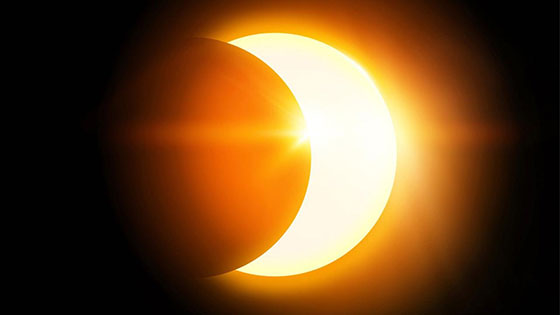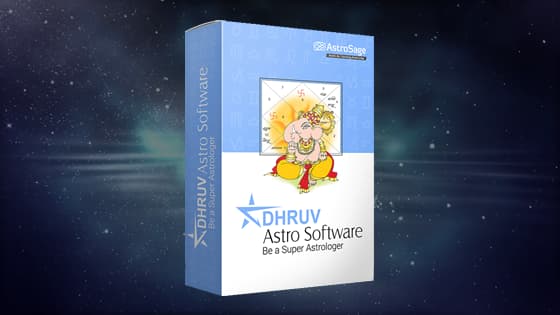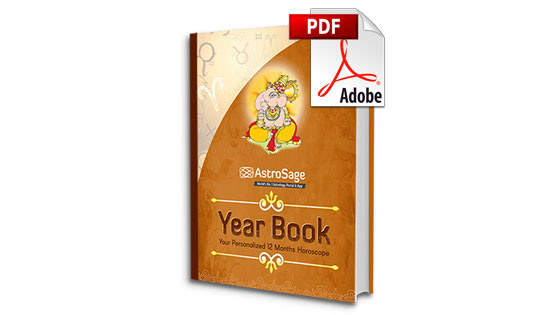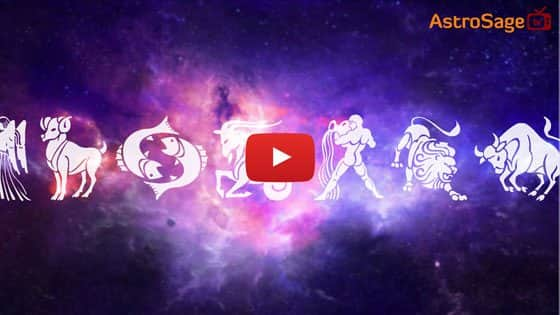Solar Eclipse 2020 Dates: Sutak Time & Rituals
Know Solar Eclipse 2020 details, and Sutak Period time in this article. Solar Eclipse is regarded as an astrological as well as astronomical phenomenon incurred within the Universe. There is a total of two Solar Eclipse occuring in 2020. Let us know their dates, time duration, the areas they will be visible, and rules and precautions to follow during this event. Also, know when will the Sutak Period begins, and remedies to ward away malefic effects of this eclipse. Read the useful details as follow the rituals for a fruitful outcome.

हिंदी में पढ़ने के लिए, यहां क्लिक करें : सूर्य ग्रहण 2020
The predictions are based on your moon sign. Know your moon sign: Moon Sign
Solar Eclipse in 2020
| Date | Type | Duration | Visibility | Sutak Period |
| 21 June | Annular Solar Eclipse | From 09:15:58 to 15:04:01 | India, Southeast Europe, Indian Ocean, Pacific Ocean, Africa and North America and major parts of South America | Will be observed |
| 14-15 December | Full Solar Eclipse | From 19:03:55 to 00:23:03 | Southern part of Africa, most of South America, the Pacific Ocean, the Atlantic and Indian Ocean, and Antarctica | Will not be observed |
From astrological point of view, let’s know more about these dates and effect of Solar Eclipse 2020 on the lives of natives on this date:
- First Solar Eclipse: The First and Annular Solar Eclipse will occur on 21 June 2020, Sunday. As per Hindu Panchang, the first eclipse of this year 2020 will take place on the Amavasya tithi under Mrigashirsha Nakshatra during Krishna Paksha in Gemini sign. Hence, natives associated with this sign and nakshatra will have to suffer from unfavourable effects.
- Second Solar Eclipse: The Second and Full Solar Eclipse will occur on 14-15 December 2020, Monday-Tuesday. As per Hindu Panchang, the second eclipse of this year 2020 will take place on the Amavasya tithi under Jyestha Nakshatra during Krishna Paksha in Scorpio sign. Hence, natives associate with this sign and nakshatra will have to suffer from unfavourable effects.
Solar Eclipse 2020: What Is A Solar Eclipse?
As Solar Eclipse 2020 explains that in astronomy, when the Moon moves in its orbital path and gets posited between the Earth and the Sun, hereby engulfing its shadow on the Earth, the phenomenon of Solar Eclipse occurs. In this scenario, the Moon covers the Earth’s surface fully or partially when in alignment with the Earth and the Sun. This is also known as Surya Grahan 2020 in Hindi. Vedic Astrology suggests the natives to remain cautious of this event, as negative energies become active and offer adverse outcomes. Three types of Solar Eclipse occurs:
- Full Solar Eclipse: In a Full Solar Eclipse, the Moon covers the entire disk of the Sun, and obstruct its rays from reaching the Earth.
- Partial Solar Eclipse: Partial Solar Eclipse occurs when the Moon and the Sun appears not to be in a straight line, hereby forming a partial obstruction.
- Annular Solar Eclipse: Annular Solar Eclipse occurs when the Moon seems smaller than the Sun and obscures the middle part of the Sun, hereby creating an annulus or a ring-like shape.
Solar Eclipse 2020: Eclipse Vedic Astrology
The Sun, in Vedic Astrology, represents one’s soul, mind and father. It is the elementary source of life. This planet rules over the zodiac sign Leo and East direction and represents the gemstone Ruby. it remains debilitated in Libra and exalted in Aries. A positive Sun in one’s kundli or birth chart signifies royalty, power, authority and fame, whereas an inflicted Sun increases aggression, ego and negativity in a native. With the placement of Rahu or Ketu with Sun in one’s kundli, Solar Eclipse occurs. Hence, the native suffers from unfavourable outcomes due to the influence of Rahu or Ketu.
Solar Eclipse 2020 is a celestial occurrence where the Moon aligns between the Sun and the Earth. From the Earth’s point of view, it is stated that the Moon has covered the Sun with its shape, hereby obstructing the Sun rays from entering the Earth. As per Vedic Astrology, Rahu and Ketu were formed after Swarbhanu had his head and torso apart by Lord Vishnu. After the event of Samudra Manthan, the Immortal Nectar of Life or Amrit was retained, which was taken by the Demons. On the request of the Devtas, Lord Vishnu took the Avatar of Mohini and took away the nectar. Swarbhanu saw the opportunity and disguised himself to have the nectar. After Sun or Lord Surya and Moon or Lord Chandra identified him, Lord Vishnu killed him, therefore separating his head from his torso using his Sudarshan Chakra.
This lead to the birth of Rahu aka Swarbhanu’s torso and Ketu aka Swarbhanu’s torso. Let us inform you that these two planets aren’t counted as one of the Navagrahas but shadow planets, and are believed to curse the Moon and Sun by creating a shadow on them, hereby forming an eclipse.
Precautions During Solar Eclipse 2020
- Solar Eclipse musn’t be seen directly with naked eyes. Use eclipse glasses, normal mirror or place a plate with water
- Do not use any items with sharp edges, such as knives, scissors, pins, needles, etc.
- Do not get involved in sensual activities during the eclipse.
- Avoid eating any food items or drinking water in this duration.
- Do not take a bath or perform puja.
- Recite Aditya Hridaya Stotra and offer water to the Sun.
- Maha Mrityunjaya Mantra must be chanted to avoid adverse outcomes.
- Chant the Mantra: "ॐ आदित्याय विदमहे दिवाकराय धीमहि तन्न: सूर्य: प्रचोदयात" / "oṃ ādityāya vidamahe divākarāya dhīmahi tanna: sūrya: pracodayāta".
Solar Eclipse 2020: Sutak Kaal - Inauspicious Period During Solar Eclipse
Sutak Kaal 2020 is known as an inauspicious time period before the eclipse, when starting several auspicious or fruitful tasks is prohibited. This period begins hours before an eclipse; 12 hours before the Solar Eclipse and 9 hours before the Lunar Eclipse, and ends with taking a fresh bath after the eclipse ends. It must be noted that Sutak rules don't apply on small children, elderly people, and sick natives. In the year 2020, the first Solar Eclipse taking place on 21 June will be visible in India. Therefore, the Sutak Period will be observed by the natives.
Sutak Kaal Timings for First Solar Eclipse 2020
The first Solar Eclipse 2020, which is an Annular Solar Eclipse, will occur on 21 June, Sunday. The eclipse duration begins from 09:15:58 to 15:04:01, and will be visible in India, Southeast Europe, Indian Ocean, Pacific Ocean, Africa and North America and major parts of South America. As this eclipse is visible in India, hence the Sutak period will be observed by the natives. Below mentioned is the duration of the Sutak Period:
| Sutak Begins | 21:15:58 on 20 June |
| Sutak Ends |
15:04:01 on 21 June |
Solar Eclipse 2020: Watching Solar Eclipse- Safe Or Not?
It is suggested not to watch Solar Eclipse 2020 with naked eyes, as it is believed that the Sun emits bright as well as harmful rays such as UV rays during the eclipse, which can harm the naked eyes. Hence, it is recommended not to watch the eclipse with naked eyes. However, one can watch a Total Solar Eclipse, as during this phenomenon, the Moon completely covers the Sun, hereby obstructing its rays from falling on the Earth. However, you must avoid its partial phases at all costs. Adding to it, use protective glasses or any other indirect method to see the Solar Eclipse.
Astrological services for accurate answers and better feature
Astrological remedies to get rid of your problems

AstroSage on MobileAll Mobile Apps
- Horoscope 2026
- राशिफल 2026
- Calendar 2026
- Holidays 2026
- Shubh Muhurat 2026
- Saturn Transit 2026
- Ketu Transit 2026
- Jupiter Transit In Cancer
- Education Horoscope 2026
- Rahu Transit 2026
- ராசி பலன் 2026
- राशि भविष्य 2026
- રાશિફળ 2026
- রাশিফল 2026 (Rashifol 2026)
- ರಾಶಿಭವಿಷ್ಯ 2026
- రాశిఫలాలు 2026
- രാശിഫലം 2026
- Astrology 2026


































